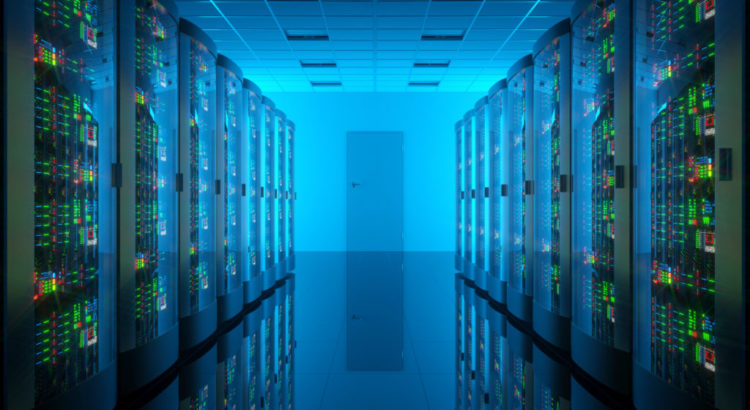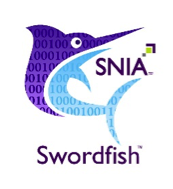
Barry Kittner, Technology Initiatives Manager, Intel and SNIA Storage Management Initiative Governing Board Member
To understand Swordfish, let’s start with the basics to examine how modern data centers are managed.
A user of a PC/notebook is assumed to be in control of that PC. What happens when there are two? Or 10? Or 1,000? Today’s modern data centers can have 100,000 computers (servers) or more! That requires the ability to be in control or “manage” them from a central location. How does one do that? It is done via a protocol that enables remote management; today that standard is IPMI, an acronym for Intelligent Platform Management Interface, and which has existed for 20 years. Among issues with IPMI is that the scale of today’s data centers was not fully envisioned 20 years ago, so some of the components of IPMI cannot cover the tens of thousands of servers it is expected to manage. The developers also did not foresee the stringent security and increased privacy requirements expected in modern data centers.
The DMTF created, and continues to improve upon, a modern alternative standard for remote or centralized management of data centers called Redfish®. For those familiar with server management, Redfish is referred to as “schema-based,” meaning that engineers have carefully organized many different categories of information as well as the relationships between them. Schema are structured to manage the millions of bits of information and operating characteristics that data centers create and report on a continuous basis and that managers monitor to understand the status of the datacenter. In this way, information on the operational parameters of the machines in the data center is provided, when and where needed, in a consistent, organized and reliable way.
Unlike IPMI, the new Redfish standard uses modern tools, allowing it to scale to the size of today’s modern data centers. Redfish has output language readable by datacenter operators, works across the wide variety of servers and datacenter equipment that exists today, and is extensible for the new hardware of tomorrow.
The Storage Networking Industry Association (SNIA) is a global non-profit organization dedicated to developing standards and education programs to advance storage and information technology. SNIA created the Storage Management Initiative Specification (SMI-S) currently in use in datacenters to manage interoperable storage. SNIA immediately recognized the value of the new Redfish standard and created SNIA Swordfish , which is an extension to Redfish that seamlessly manages storage equipment and storage services in addition to the server management of Redfish. Just as most PC’s have one or more storage devices, so do most servers in datacenters, and Swordfish can manage storage devices and allocation across all of the servers in a datacenter in the same structured and organized fashion.
, which is an extension to Redfish that seamlessly manages storage equipment and storage services in addition to the server management of Redfish. Just as most PC’s have one or more storage devices, so do most servers in datacenters, and Swordfish can manage storage devices and allocation across all of the servers in a datacenter in the same structured and organized fashion.
A summary and additional information for the more technical readers is below. If you want to learn more, all the items underlined and in bold below yield more information. You can click them, or type them into your internet browser for more information on the terms used in this tutorial:
- For security, Swordfish employs HTTPS, a well-known and well-tested protocol that is used for secure communications over the World Wide Web.
- JavaScript and ODATA increase the readability, compatibility and integration of RESTful API’s that manage data collected from datacenter devices and covers a range of information useful for beginners through experienced engineers.
- Interoperability exists due to the use of a common schema definition language (CSDL) and common APIs from eco-system partners including the Open Compute Project (OCP).
- Redfish and Swordfish were created and are maintained by industry leaders that meet weekly to tune and extend management capabilities. (See DMTF.ORG, SNIA.ORG)
- These schema work together to allow full network discovery, provisioning, volume mapping and monitoring of block, file and object storage for all the systems in a modern datacenter.
There is so much to learn beyond this brief tutorial. Start at DMTF.ORG to learn about Redfish. Then surf over to SNIA.ORG/SWORDFISH to see how Swordfish brings the benefits of schema-based management to all your storage devices. You will learn how Swordfish works in hyperscale and cloud infrastructure environments and enables a scalable solution that grows as your datacenter requirements grow.
By Barry Kittner, Technology Initiatives Manager, Intel and SNIA Storage Management Initiative Governing Board Member
 manageability providing the standards-based interface.
The OpenFabrics Alliance (OFA) is developing an OpenFabrics Management Framework (OFMF) designed for configuring fabric interconnects and managing composable disaggregated resources in dynamic HPC infrastructures using client-friendly abstractions.
Want to learn more? Read More
manageability providing the standards-based interface.
The OpenFabrics Alliance (OFA) is developing an OpenFabrics Management Framework (OFMF) designed for configuring fabric interconnects and managing composable disaggregated resources in dynamic HPC infrastructures using client-friendly abstractions.
Want to learn more? Read More

 manageability providing the standards-based interface.
The OpenFabrics Alliance (OFA) is developing an OpenFabrics Management Framework (OFMF) designed for configuring fabric interconnects and managing composable disaggregated resources in dynamic HPC infrastructures using client-friendly abstractions.
Want to learn more? Read More
manageability providing the standards-based interface.
The OpenFabrics Alliance (OFA) is developing an OpenFabrics Management Framework (OFMF) designed for configuring fabric interconnects and managing composable disaggregated resources in dynamic HPC infrastructures using client-friendly abstractions.
Want to learn more? Read More

 specification and ecosystem are growing in scope to include full enablement and alignment for NVMe® and NVMe-oF client workloads and use cases. By partnering with other industry-standard organizations including DMTF®, NVM Express, and OpenFabrics Alliance (OFA), SNIA’s Scalable Storage Management Technical Work Group has updated the Swordfish bundles from version 1.2.1 and later to cover an expanding range of NVMe and NVMe-oF functionality including NVMe device management and storage fabric technology management and administration.
The Need
Large-scale computing designs are increasingly multi-node and linked together through high-speed networks. These networks may be comprised of different types of technologies, fungible, and morphing. Over time, many different types of high-performance networking devices will evolve to participate in these modern, coupled-computing platforms. New fabric management capabilities, orchestration, and automation will be required to deploy, secure, and optimally maintain these high-speed networks.
specification and ecosystem are growing in scope to include full enablement and alignment for NVMe® and NVMe-oF client workloads and use cases. By partnering with other industry-standard organizations including DMTF®, NVM Express, and OpenFabrics Alliance (OFA), SNIA’s Scalable Storage Management Technical Work Group has updated the Swordfish bundles from version 1.2.1 and later to cover an expanding range of NVMe and NVMe-oF functionality including NVMe device management and storage fabric technology management and administration.
The Need
Large-scale computing designs are increasingly multi-node and linked together through high-speed networks. These networks may be comprised of different types of technologies, fungible, and morphing. Over time, many different types of high-performance networking devices will evolve to participate in these modern, coupled-computing platforms. New fabric management capabilities, orchestration, and automation will be required to deploy, secure, and optimally maintain these high-speed networks. 



 If you haven’t caught the updates on SNIA SwordfishTM lately, please read on because it’s swimming fast! The new SNIA specification offers a unified approach to managing storage and servers in environments like hyperscale and cloud infrastructures. SNIA’s Scalable Storage Management Technical Work Group (SSM TWG) just announced completion of
If you haven’t caught the updates on SNIA SwordfishTM lately, please read on because it’s swimming fast! The new SNIA specification offers a unified approach to managing storage and servers in environments like hyperscale and cloud infrastructures. SNIA’s Scalable Storage Management Technical Work Group (SSM TWG) just announced completion of  If you haven’t caught the updates on SNIA SwordfishTM lately, please read on because it’s swimming fast! The new SNIA specification offers a unified approach to managing storage and servers in environments like hyperscale and cloud infrastructures. SNIA’s Scalable Storage Management Technical Work Group (SSM TWG) just announced completion of
If you haven’t caught the updates on SNIA SwordfishTM lately, please read on because it’s swimming fast! The new SNIA specification offers a unified approach to managing storage and servers in environments like hyperscale and cloud infrastructures. SNIA’s Scalable Storage Management Technical Work Group (SSM TWG) just announced completion of